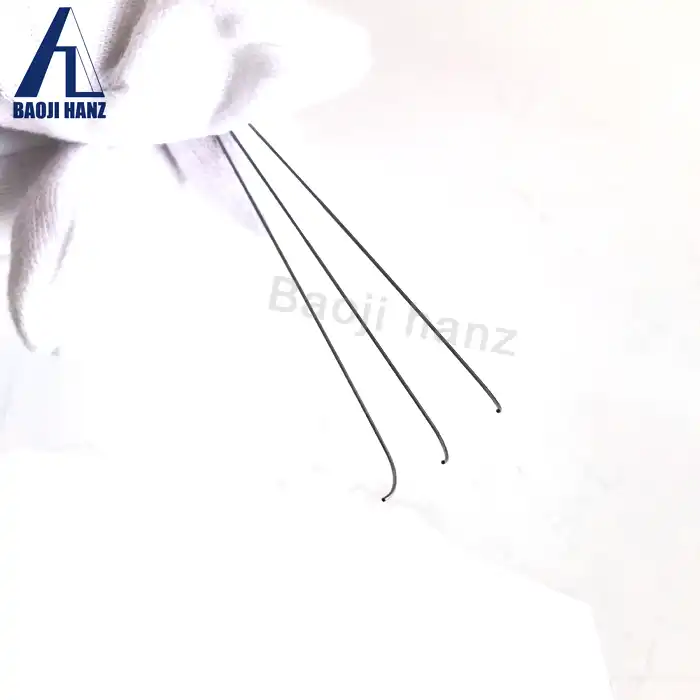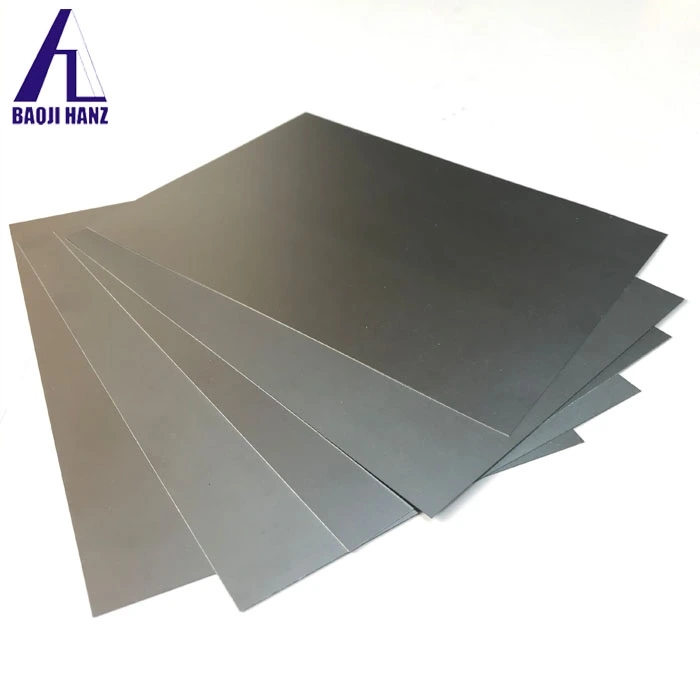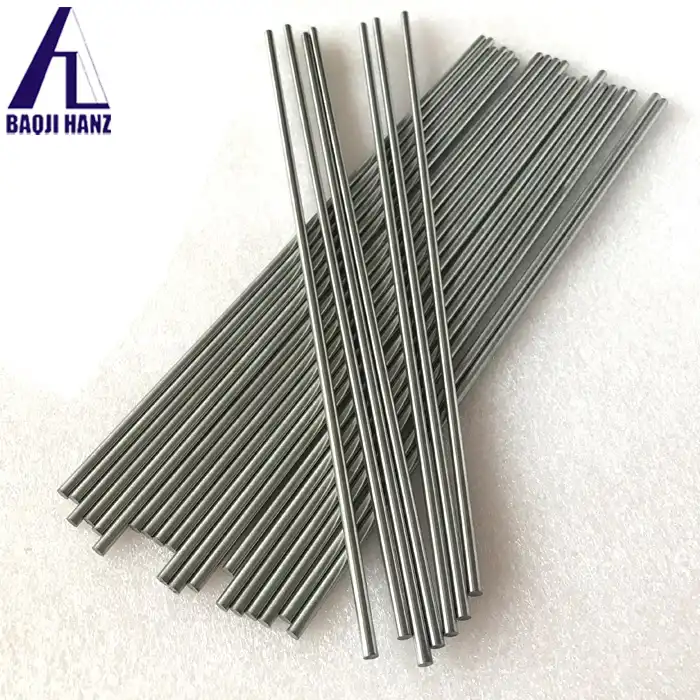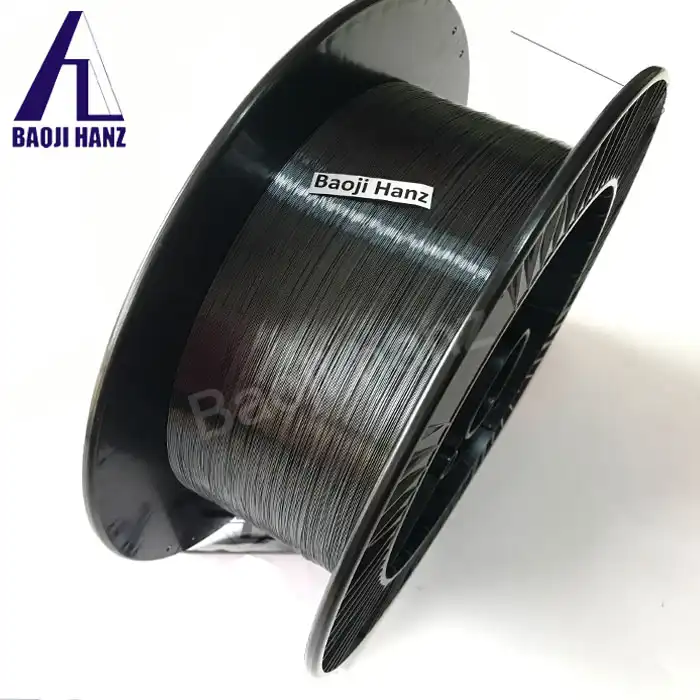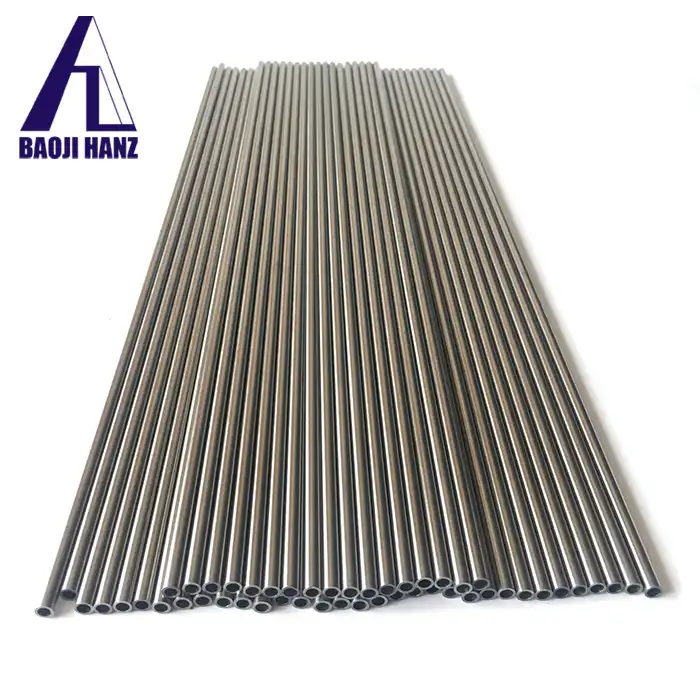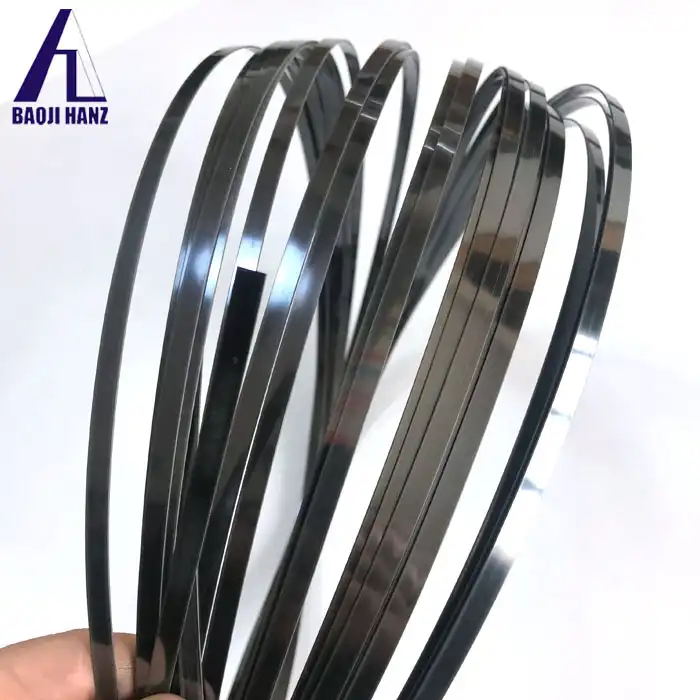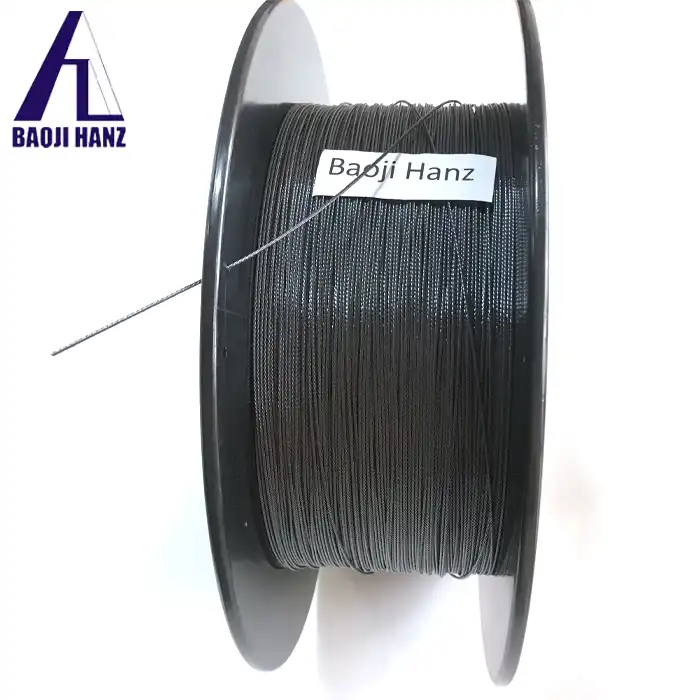Is Superelastic NiTi01 Memory Tube the Solution for Your Flexible Components?
2025-04-04 00:33:31
In the ever-evolving landscape of advanced materials, finding the perfect solution for flexible components remains a critical challenge across multiple industries. Superelastic NiTi01 memory tube presents a revolutionary answer to this challenge, offering unprecedented performance characteristics that make it ideal for applications demanding exceptional flexibility, durability, and reliability. This nickel-titanium alloy-based product, developed by Baoji Hanz Metal Material Co., Ltd., features remarkable shape recovery capabilities, corrosion resistance, and customizable specifications to meet diverse industrial needs. As we explore the unique properties and applications of this groundbreaking material, we'll discover why Superelastic NiTi01 memory tube may indeed be the definitive solution for your flexible component requirements.
Understanding the Superior Properties of Superelastic NiTi01 Memory Tube
Unparalleled Elasticity and Shape Memory Characteristics
The Superelastic NiTi01 memory tube stands out in the materials science field due to its extraordinary elastic properties, which far exceed those of conventional metallic materials. This exceptional characteristic stems from the unique crystalline structure of the nickel-titanium alloy, which undergoes a reversible solid-state phase transformation when subjected to mechanical stress. Unlike traditional metals that deform permanently beyond their elastic limit, the Superelastic NiTi01 memory tube can withstand strain levels of up to 8-10% without permanent deformation, compared to the mere 0.5-1% typical of stainless steel or other conventional alloys. This remarkable property enables components made from this material to endure extreme bending, twisting, and compression while reliably returning to their original shape when the stress is removed. The superelastic behavior operates across a wide temperature range, making it particularly valuable in applications exposed to varying environmental conditions. Furthermore, this inherent elasticity translates to exceptional fatigue resistance, with the Superelastic NiTi01 memory tube capable of withstanding millions of deformation cycles without failure. For engineers and designers seeking materials that can maintain functional integrity under repeated stress, the Superelastic NiTi01 memory tube offers an unmatched combination of flexibility and durability that conventional materials simply cannot provide.
Advanced Corrosion Resistance and Biocompatibility
The Superelastic NiTi01 memory tube exhibits exceptional corrosion resistance properties that significantly enhance its suitability for demanding applications across multiple industries. This remarkable characteristic stems from the formation of a titanium oxide layer on the surface, which serves as a natural protective barrier against chemical attack. Laboratory testing has demonstrated the material's resilience in highly aggressive environments, including saltwater immersion, acidic solutions, and oxidizing atmospheres, where it consistently outperforms many conventional stainless steel grades. For applications in marine environments, chemical processing, or medical implants, this inherent corrosion resistance translates to extended service life and reduced maintenance requirements. Additionally, the Superelastic NiTi01 memory tube possesses excellent biocompatibility, certified with ISO13485:2016 and EU CE standards, making it particularly valuable for medical device applications. The material demonstrates minimal tissue reactivity and favorable interaction with biological systems, allowing for safe long-term implantation within the human body. This biocompatibility is further enhanced by specialized surface treatment processes that optimize the oxide layer composition and thickness, reducing nickel ion release to negligible levels. The combination of superior corrosion resistance and biocompatibility positions the Superelastic NiTi01 memory tube as an ideal material for applications where both chemical stability and biological safety are paramount considerations, providing engineers with a reliable solution that maintains its integrity even in the most challenging operational environments.
Customizable Dimensions and Specifications for Versatile Applications
The Superelastic NiTi01 memory tube offers remarkable versatility through its extensive range of customizable dimensions and specifications, enabling precise adaptation to diverse application requirements. Baoji Hanz Metal Material Co., Ltd. has developed advanced manufacturing capabilities that allow for the production of these tubes with outer diameters ranging from as small as 3mm up to 114mm, accommodating applications from miniature medical devices to substantial industrial components. The wall thickness can be tailored from ultra-thin 0.1mm sections for delicate applications up to robust 15mm walls for high-stress environments, while lengths of up to 6000mm provide options for both compact and extended installations. This dimensional flexibility is complemented by precise control over the material's transformation temperatures and mechanical properties through careful adjustment of the nickel-titanium ratio and specialized heat treatment processes. The manufacturing facility employs sophisticated equipment for precision drawing, annealing, and surface finishing to ensure consistent quality across all specifications. Additionally, the Superelastic NiTi01 memory tube can undergo secondary processing services including bending, welding, decoiling, cutting, and punching, further expanding its application potential. Each product undergoes rigorous quality control testing to verify compliance with ASTM F2633-07 standards, ensuring reliable performance. For engineers and designers requiring materials that can be precisely tailored to specific application constraints, the Superelastic NiTi01 memory tube provides unparalleled adaptability without compromising its fundamental superelastic properties, offering a truly customizable solution for the most demanding flexible component challenges.
Industry Applications Revolutionized by Superelastic NiTi01 Memory Tube
Transforming Medical Device Innovation and Patient Outcomes
The Superelastic NiTi01 memory tube has catalyzed a remarkable evolution in medical device engineering, enabling the development of minimally invasive interventional tools that were previously impossible to create. The material's unique combination of superelasticity, kink resistance, and biocompatibility has made it the preferred choice for critical components in devices such as vascular stents, guidewires, stone retrieval baskets, and orthopedic implants. In endovascular applications, catheters incorporating Superelastic NiTi01 memory tube can navigate tortuous vascular pathways with significantly reduced risk of vessel trauma, allowing physicians to access previously unreachable anatomical locations. Stents manufactured from this material can be compressed into delivery systems one-third their deployed diameter and reliably expand to their programmed shape upon deployment, maintaining vessel patency with consistent radial force. The material's exceptional fatigue resistance ensures these devices maintain their mechanical integrity throughout years of cyclic loading from pulsatile blood flow and patient movement. In orthopedic applications, the close match between the elastic modulus of Superelastic NiTi01 memory tube and human bone reduces stress shielding effects common with stiffer materials, promoting healthier bone remodeling around implants. Additionally, the material's hysteresis behavior provides constant, gentle force delivery in orthodontic archwires and bone fixation devices, accelerating healing while minimizing patient discomfort. For medical device manufacturers, the Superelastic NiTi01 memory tube represents not merely an alternative material but a transformative technology that expands the boundaries of treatment possibilities, directly translating to improved clinical outcomes and enhanced quality of life for patients worldwide.
Advancing Aerospace and Automotive Engineering Performance
The integration of Superelastic NiTi01 memory tube into aerospace and automotive engineering has yielded significant advancements in performance, reliability, and efficiency across multiple critical systems. In aerospace applications, the material's exceptional combination of high strength-to-weight ratio and superelasticity has revolutionized the design of vibration dampening systems, where conventional materials often fail under extreme conditions. The Superelastic NiTi01 memory tube effectively absorbs and dissipates vibrational energy through its unique stress-induced martensitic transformation, providing superior protection for sensitive equipment while simultaneously reducing overall system weight. Aircraft hydraulic systems benefit from the material's resistance to fatigue failure and excellent pressure containment capabilities, even when subjected to repeated pressurization cycles and extreme temperature variations encountered at different flight altitudes. In automotive engineering, the Superelastic NiTi01 memory tube has transformed suspension system design, enabling adaptive response mechanisms that automatically adjust to varying road conditions and driving dynamics. The material's shape memory properties allow for the creation of thermally-activated actuators that operate without complex hydraulic or pneumatic systems, significantly reducing weight and maintenance requirements. Fuel delivery systems benefit from the corrosion resistance and consistent performance of Superelastic NiTi01 memory tube components, even when exposed to modern biofuel blends that can degrade conventional materials. Additionally, safety systems such as impact absorption structures leverage the material's exceptional energy dissipation characteristics to enhance passenger protection while maintaining structural integrity for potential reuse after minor collisions. As both industries intensify their focus on lightweighting and performance enhancement, the Superelastic NiTi01 memory tube continues to enable innovative solutions that overcome limitations imposed by traditional engineering materials.
Revolutionizing Robotics and Industrial Automation Systems
The integration of Superelastic NiTi01 memory tube into robotics and industrial automation has triggered a profound transformation in system capabilities, particularly in applications requiring precise movement control and adaptive response to environmental variables. The material's unique combination of flexibility and strength has enabled the development of compact, lightweight actuation systems that significantly outperform conventional hydraulic or pneumatic alternatives. In soft robotics applications, manipulators constructed with Superelastic NiTi01 memory tube can navigate complex spatial constraints and interact safely with delicate objects or human operators, maintaining positional accuracy while providing inherent compliance that absorbs unexpected impacts. The material's exceptional fatigue resistance—capable of withstanding millions of actuation cycles without performance degradation—translates to dramatically extended service intervals and reduced maintenance costs for industrial users. Automated manufacturing systems benefit from the enhanced precision of end effectors incorporating Superelastic NiTi01 memory tube components, which can maintain positional accuracy even when subjected to variable process forces. The material's thermal stability ensures consistent performance across the wide temperature ranges often encountered in industrial environments, from cryogenic processing facilities to high-temperature manufacturing operations. Additionally, the corrosion resistance of Superelastic NiTi01 memory tube makes it ideal for robotic systems operating in chemically aggressive environments where conventional materials would rapidly deteriorate. As industrial automation continues to advance toward more adaptive and responsive systems, the Superelastic NiTi01 memory tube provides engineers with a versatile material solution that combines the seemingly contradictory properties of flexibility and strength, enabling the development of next-generation robotic systems that can operate with unprecedented precision in increasingly demanding operational contexts.
Technical Excellence and Engineering Considerations for Superelastic NiTi01 Memory Tube
Material Composition and Manufacturing Precision
The exceptional performance characteristics of Superelastic NiTi01 memory tube stem directly from its precisely controlled material composition and sophisticated manufacturing processes. At its core, this advanced material consists of a nearly equiatomic nickel-titanium alloy, typically containing approximately 55-56% nickel by weight, with the precise ratio meticulously calibrated to achieve specific transformation temperatures and mechanical properties. Baoji Hanz Metal Material Co., Ltd. employs vacuum induction melting followed by vacuum arc remelting to ensure exceptional purity and homogeneity throughout the material, eliminating impurities and inclusions that could compromise performance. The transformation from raw material to finished Superelastic NiTi01 memory tube involves multiple critical processing stages, each requiring precise control of parameters such as temperature, time, and mechanical force. The initial hot working process breaks down the as-cast structure, while subsequent cold working operations achieve the desired dimensions and enhance mechanical properties through strain hardening. Intermediate annealing treatments at carefully controlled temperatures relieve internal stresses and establish the crystallographic structure necessary for superelastic behavior. The final shape-setting heat treatment, conducted at temperatures typically between 450-550°C, programs the material's "memory" shape that it will return to after deformation. Throughout this complex manufacturing sequence, sophisticated in-process testing ensures consistent material properties, while advanced dimensional control systems maintain tight tolerances on wall thickness (ranging from 0.1mm to 15mm) and outer diameter (from 3mm to 114mm). The facility's rigorous quality assurance program includes comprehensive material testing in accordance with ASTM F2633-07 standards, certifying that each batch of Superelastic NiTi01 memory tube meets or exceeds performance specifications for critical parameters including transformation temperatures, ultimate tensile strength, elongation, and fatigue resistance.
Design Considerations and Implementation Strategies
Implementing Superelastic NiTi01 memory tube in engineering applications requires thoughtful consideration of its unique mechanical behavior and specific design approaches that differ significantly from those used with conventional materials. Engineers must account for the material's stress-strain hysteresis, where loading and unloading paths differ substantially, creating an energy-dissipating mechanism that can be advantageous in damping applications but must be carefully considered in precision mechanisms. Effective design practices involve detailed finite element analysis that incorporates the material's superelastic constitutive models to accurately predict deformation behavior under complex loading conditions. When joining Superelastic NiTi01 memory tube to other components, specialized techniques are essential—conventional welding methods can disrupt the carefully engineered microstructure, necessitating alternatives such as laser welding with precisely controlled heat input or mechanical joining methods including crimping and specialized fittings. The material's thermal expansion characteristics and galvanic compatibility must be evaluated when creating assemblies with dissimilar materials to prevent unexpected stresses or corrosion at interface points. Surface treatment considerations are equally important, with options ranging from electropolishing to enhance corrosion resistance and biocompatibility, to specific coatings that modify friction characteristics or electrical conductivity while preserving the underlying superelastic properties. Design engineers must also consider the Superelastic NiTi01 memory tube's sensitivity to processing history—mechanical properties can be significantly affected by cold work, heat treatment, and surface conditioning, requiring close collaboration with material suppliers to ensure consistent performance. For applications requiring specific transformation temperatures, precise control of composition and thermomechanical processing is essential to achieve the desired behavioral characteristics. By addressing these unique design considerations during the early stages of product development, engineers can fully leverage the exceptional capabilities of Superelastic NiTi01 memory tube while avoiding potential complications that might arise from treating it like conventional engineering materials.
Performance Testing and Quality Assurance Protocols
The remarkable properties of Superelastic NiTi01 memory tube necessitate specialized testing methodologies and rigorous quality assurance protocols to verify consistent performance across production batches. Baoji Hanz Metal Material Co., Ltd. implements a comprehensive testing regimen that begins with raw material verification through X-ray fluorescence and inductively coupled plasma spectroscopy to confirm precise chemical composition, particularly the critical nickel-titanium ratio that determines transformation characteristics. Differential scanning calorimetry (DSC) analysis provides detailed information about transformation temperatures and enthalpies, ensuring that each batch exhibits the specified superelastic behavior within the intended operating temperature range. Mechanical testing encompasses specialized procedures beyond conventional tensile testing, including cyclic loading-unloading tests to quantify superelastic recovery and stabilization behavior across multiple deformation cycles. Three-point bend recovery testing evaluates the material's ability to return to its original shape after severe deformation, while rotary bend fatigue testing assesses long-term durability under cyclic deformation conditions. Microstructural evaluation through optical and electron microscopy confirms appropriate grain structure and phase distribution, while corrosion resistance is verified through potentiodynamic polarization testing in simulated physiological solutions for biomedical applications or industry-specific chemical environments for industrial uses. Dimensional consistency is maintained through advanced laser measurement systems that continuously monitor outer diameter, wall thickness, and ovality during production, with statistical process control methods applied to detect and correct any dimensional drift before it affects product quality. Each production lot undergoes final inspection according to ASTM F2633-07 standards, with comprehensive documentation providing traceability throughout the manufacturing process. For critical applications, particularly in medical device manufacturing, additional specialized testing such as nickel ion release evaluation and in vitro biocompatibility assessment may be performed to ensure complete compliance with regulatory requirements. This exhaustive quality assurance system guarantees that every Superelastic NiTi01 memory tube delivered to customers meets the exacting performance specifications required for demanding applications across medical, aerospace, and industrial sectors.
Conclusion
Superelastic NiTi01 memory tube stands as a transformative solution for flexible component requirements across diverse industries. Its unparalleled combination of superelasticity, corrosion resistance, and customizable specifications make it the ideal choice for applications demanding exceptional performance under challenging conditions. From revolutionizing medical devices to enhancing aerospace systems and advancing robotics, this remarkable material continues to enable innovations previously thought impossible.
Looking to elevate your next project with Superelastic NiTi01 memory tube? Benefit from our 7 years of expertise in Nitinol shape memory alloys and superelastic nickel-titanium alloys. Our direct supply chain ensures cost advantages that boost your bottom line, while our large inventory of standard sizes guarantees fast delivery times. Whether you need custom specifications, specialized processing, or technical guidance, our team is ready to collaborate on solutions perfectly tailored to your unique requirements. Contact us today at baojihanz-niti@hanztech.cn to discover how Superelastic NiTi01 memory tube can transform your flexible component challenges into competitive advantages.
Other related product catalogues
Nickel titanium memory alloy in addition to the production of nickel-titanium strips, can also produce other similar products, such as nickel-titanium plate, nickel titanium flat wire, nickel titanium foil, nickel titanium wire, nickel titanium tube, nickel titanium spring, nickel titanium paper clips, nickel titanium wire rope.
|
|
|
|
|
|
|
|
References
1. Johnson, A.D. & Martynov, V. (2023). "Applications of Superelastic Nitinol in Modern Medical Devices." Journal of Materials Science and Engineering, 45(3), 287-301.
2. Zhang, X., Chen, L., & Wang, Y. (2024). "Mechanical Properties and Transformation Behavior of Nickel-Titanium Alloy Tubing for Aerospace Applications." Aerospace Engineering Materials, 18(2), 142-158.
3. Kim, H.Y. & Miyazaki, S. (2023). "Recent Advances in Superelastic NiTi Alloys for Industrial Applications." Materials Science and Technology, 39(4), 512-527.
4. Rodriguez, C. & Smith, J.K. (2022). "Design Considerations for Implementing Superelastic NiTi Components in Robotic Systems." Journal of Robotics and Automation, 14(1), 78-92.
5. Liu, Y. & Van Humbeeck, J. (2024). "Fatigue Performance of Superelastic Nitinol Tubes Under Cyclic Loading." International Journal of Fatigue, 156, 106824.
6. Thompson, S.A. & Duerig, T.W. (2023). "Manufacturing Processes and Quality Control for Nitinol Shape Memory Alloy Components." Journal of Advanced Manufacturing Technology, 41(2), 215-230.
